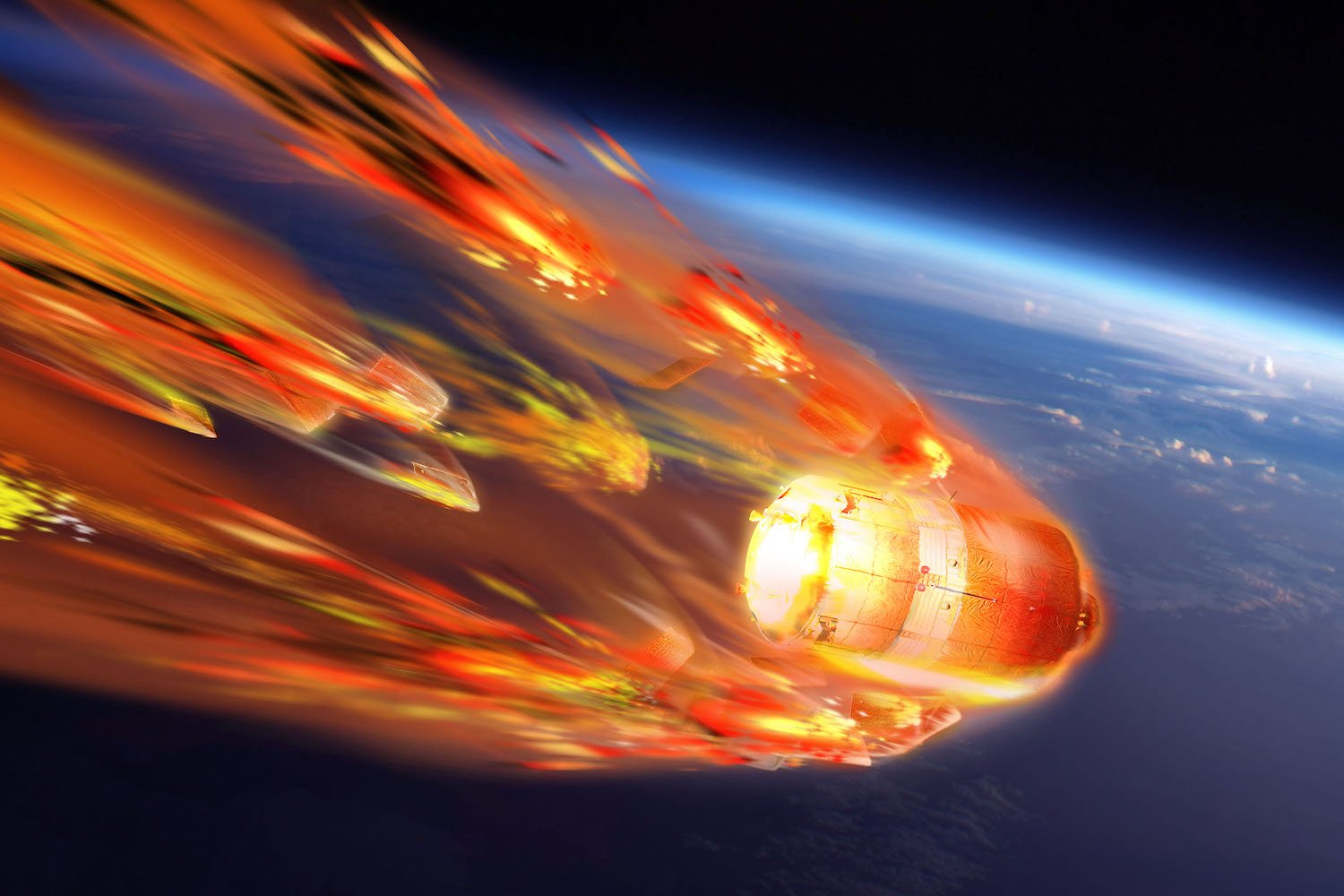Kosmos 482’s 53-Year Orbit Comes to an End
Kosmos 482, a Soviet-era spacecraft, has been stuck in Earth’s orbit for 53 years, but its journey is finally coming to an end. The failed Venus mission is expected to reenter the atmosphere between May 8 and 12, potentially breaking apart or remaining intact as it falls towards its home planet. The exact location of the crash site remains unknown, with estimates suggesting it could be anywhere on either side of the equator.
The spacecraft’s reentry is predicted to occur sometime between May 8 and 12, but the exact location of the impact site is still uncertain. A preliminary estimate suggests that the spacecraft could crash-land in a large area on either side of the equator, spanning across multiple continents. It is also unclear whether Kosmos 482 will remain in one piece or break apart during reentry, potentially raining down debris.
[Image: The Kosmos 482 spacecraft, as imaged from Earth. © Ralf Vandebergh]Kosmos 482 was launched on March 31, 1972, from the Baikonur Cosmodrome spaceport in what is now Kazakhstan. The mission aimed to reach Venus but failed to gain enough velocity to enter a transfer trajectory towards the planet. A malfunction resulted in an engine burn that wasn’t sufficient to reach Venus’ orbit, according to NASA. Since then, the spacecraft has been stuck in an elliptical orbit around Earth, measuring 130 by 6,089 miles (210 by 9,800 kilometers).
Astrophotographer Ralf Vandebergh recently captured images of Kosmos 482 in space ahead of its projected descent and noted what appeared to be a parachute deployed from the spacecraft. "At this point, nothing is sure," Vandebergh told Gizmodo in an email. "In 2014, I had a first sign of this in my images, but I didn’t think seriously about this possibility. But when I processed the 2024 images taken 10 years later and saw the same thing, I thought I needed to report this possibility."
As Ralf Vandebergh noted on Twitter:
Cosmos482 Note about the parachute possibility. Although still speculation as mentioned before, technically the images are correct. There are no tracking issues, scope issues, and I don’t expect a similar atmospheric effect in images taken 10 years apart, if that would be the case. pic.twitter.com/DiCMzqNY0Z
— Ralf Vandebergh (@ralfvandebergh) May 6, 2025
Even if the spacecraft’s exposed parachute is hanging out in space, it’s unlikely that it would still function to slow down Kosmos’ descent towards Earth.
After failing to reach Venus, the spacecraft broke apart into four different pieces, with two of the smaller fragments reentering over Ashburton, New Zealand, two days after its launch. The two remaining pieces are a carrier bus and a lander probe, which together form a spherical pressure vessel weighing over 1,000 pounds (495 kilograms).
Today, it’s challenging to determine where the remainder of the heat-resistant spacecraft will reenter Earth’s atmosphere. Its current orbit indicates it should be anywhere between latitude 52 degrees north and 52 degrees south, according to Marco Langbroek, a satellite tracker based in Leiden, the Netherlands. This area includes the United States, South America, Africa, Australia, and most of Europe and Asia south of the Arctic Circle. The spacecraft’s landing zone will become clearer as it approaches its doomed reentry.
Another question is how much of the spacecraft will survive the heat of atmospheric reentry. "As this is a lander that was designed to survive passage through the Venus atmosphere, it is possible that it will survive reentry through the Earth atmosphere intact, and impact intact," Langbroek wrote in a blog update.
Langbroek suggests an impact speed of around 150 miles per hour (242 kilometers per hour) if the lander does not break apart or largely burn up during reentry. The kinetic energy at impact is similar to that of a 15- to 21-inch-long (40- to 55-centimeter) meteorite fragment, according to Langbroek.
Since the planet is mostly made up of water, the spacecraft will likely end up at the bottom of an ocean floor. However, the chances of it impacting an inhabited area are not zero, posing some form of risk, especially as its reentry date and location remain uncertain.
Source Link





